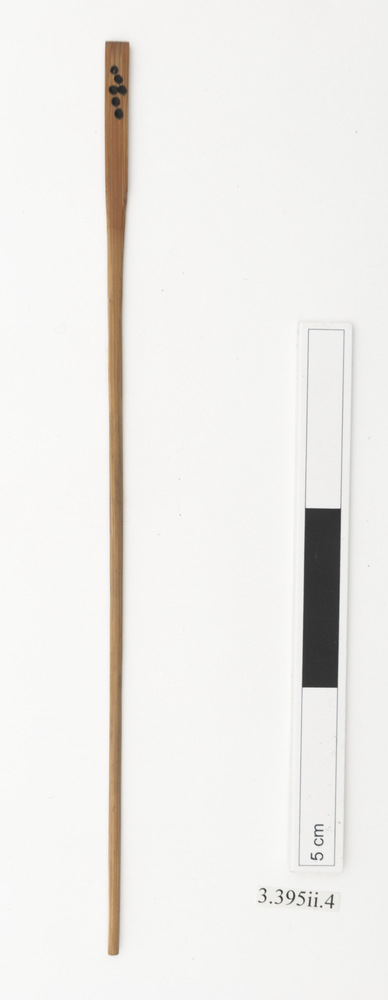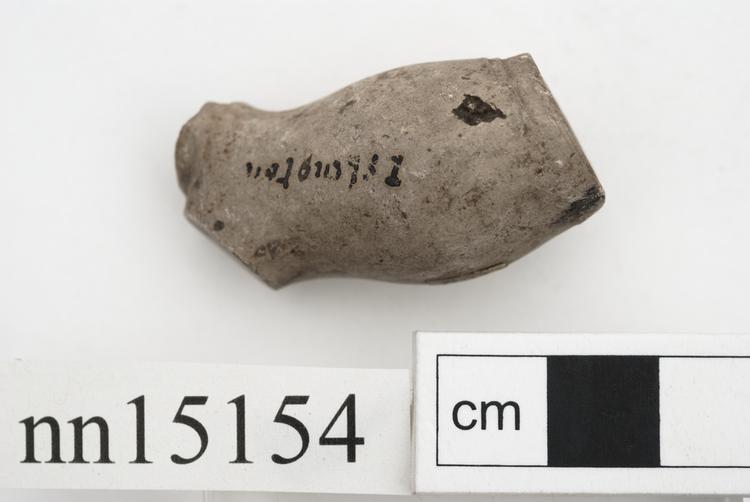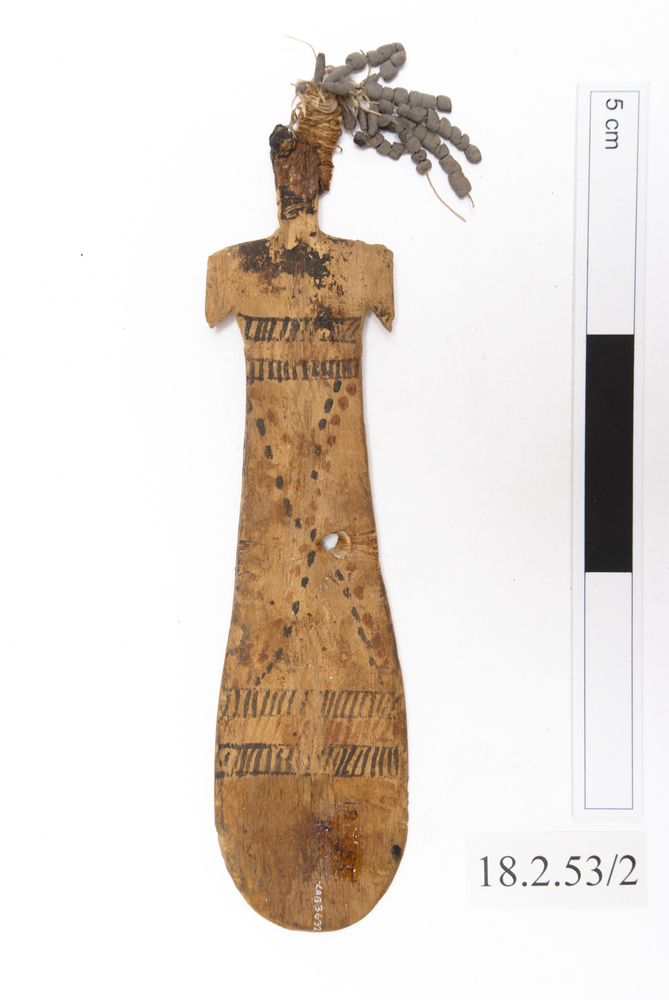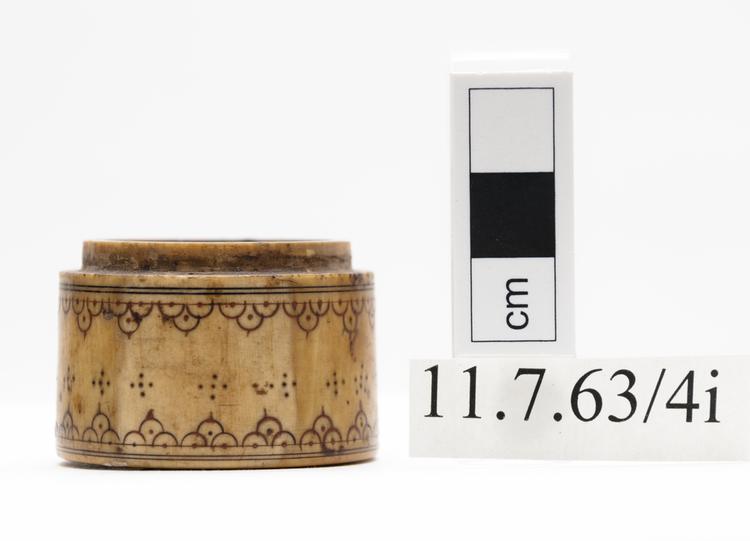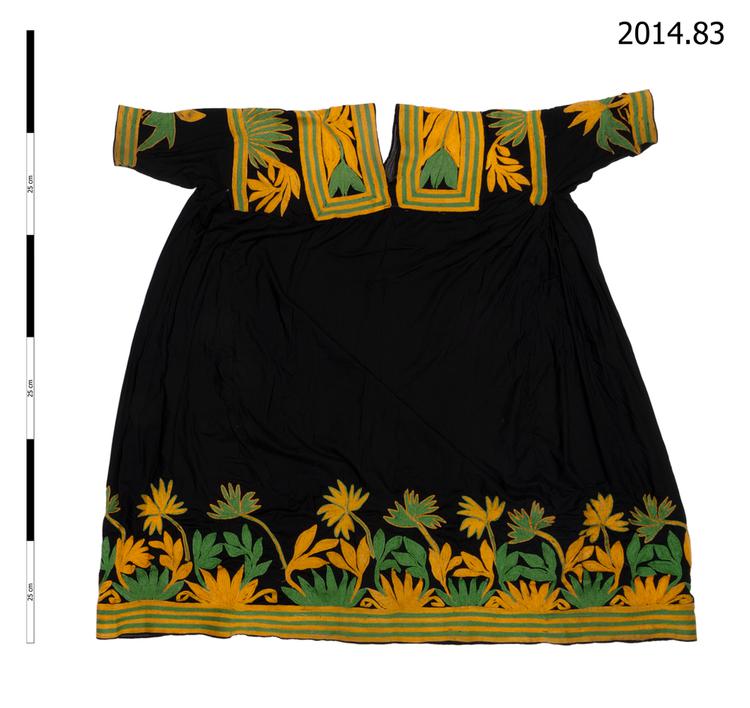
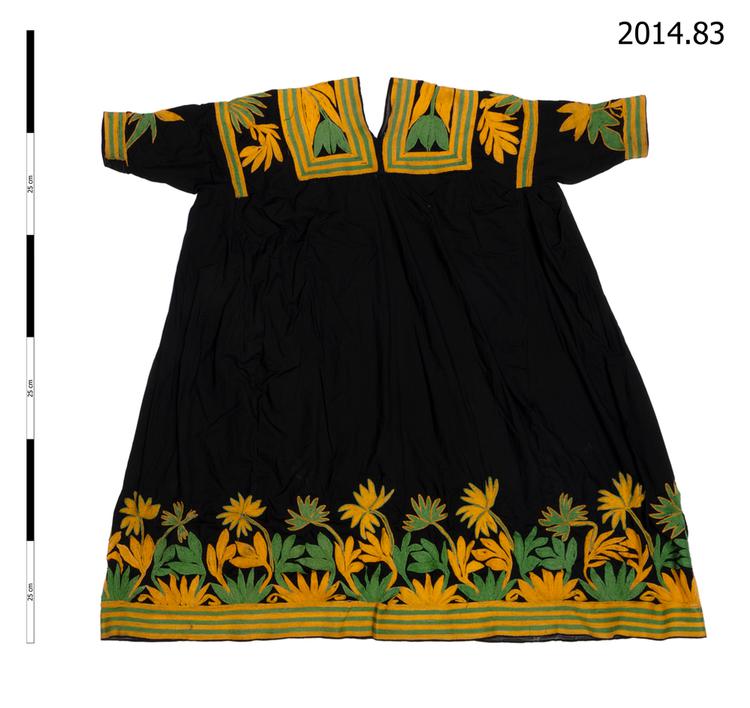
Dress or ‘piran’, green and yellow.
This woman's dress or ‘piran’ was made in 2013. The cloth used is either a black cotton or a cotton-nylon mix, bought in the bazaar. It is embroidered using a hand-powered sewing machine. Synthetically dyed wool is sewn onto the dress with white thread. Fashions for dress embroidery are always evolving and a dress can begin to look out of date in as little as two or three years. As a general rule more and more of the area of the dress is covered with embroidery as time goes on. Modern dresses such as this example are worn in the same way as traditional woollen dresses with a sash or 'pati' around the waist (see objects 2014.76 and 77). Excess fabric is pulled up over the sash to form a ‘wei’ or pouch in which lots of different things can be carried or hidden. Women wear their dresses at all times when at home or moving around the Kalash Valleys. The only time when women might wear different clothes is to change into the traditional Muslim shalwar quameez in order not to standout when travelling outside the Kalash Valleys. Little girls are first dressed as Kalasha women when they are around two or three years old during the gostnik ceremony, which takes place during the chaumos winter solstice festival. Little boys are dressed as Kalasha men during the same ceremony, however Kalasha men very rarely wear traditional dress, typically the clothes they are seen in are identical to those of their Muslim neighbours. The gostnik ceremony is very important as it marks the transformation of children into full members of the Kalasha community. (This dress forms an outfit with object numbers 2014.84 and 85).



